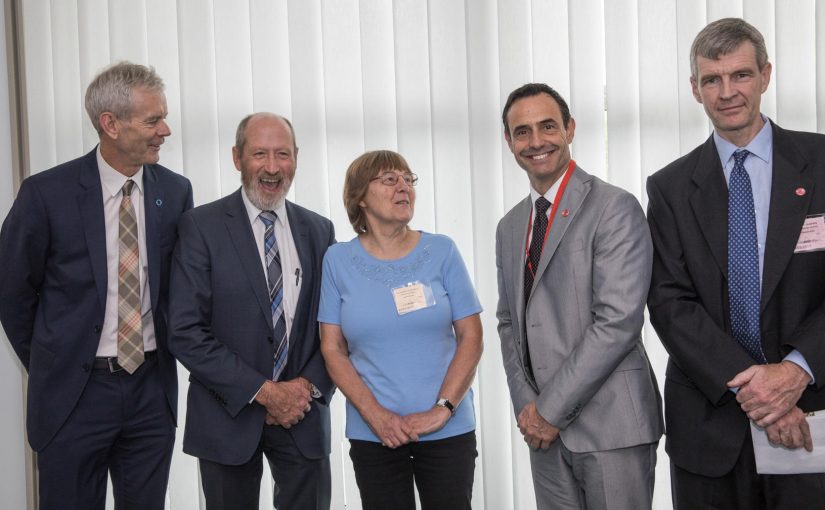(Pictured L-R: Greg Johnson, CEO Diabetes Australia, Rowan Ramsey MP, Pat Roche, John Crothers, Chairman PAA, Graham Jones, Ambassador PAA)
On 22 March 2017 Pathology Awareness Australia and Diabetes Australia invited parliamentarians to have diabetes checks at Parliament House to monitor their own health status and learn about the importance of pathology monitoring for the 1.25 million Australians living with diabetes.
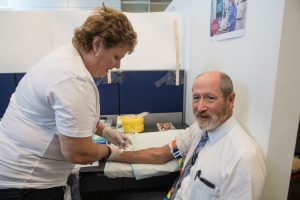
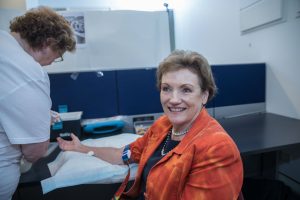
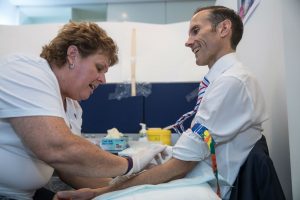
The Detecting Diabetes event at Parliament House gave politicians and staffers the opportunity to have an HbA1c blood test, which can be used to diagnose and monitor diabetes.
In total 87 people participated in testing including Rowan Ramsey MP, co-chair of the Parliamentary Friends of Diabetes and Luke Hartsuyker MP.

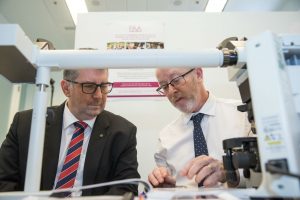
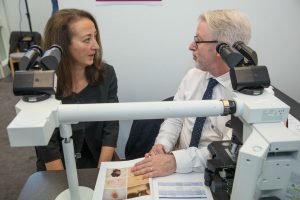
Pathology Awareness Australia ambassador, Associate Professor  Graham Jones, presented at the event.
Graham Jones, presented at the event.
“Early detection and monitoring is critical to achieving optimal outcomes for people with diabetes. Pathology blood checks are an essential tool for guiding treatment and minimising the possibility of significant complications such as kidney problems, heart conditions, limb amputations and blindness.”
According to figures from Diabetes Australia an estimated 500,000 Australians have undetected “silent” type 2 diabetes, in addition to the 1.25 million people currently diagnosed with diabetes. The total number of people with diabetes is estimated to increase to 3.5 million by 2033.
It is recommended that people with diabetes have regular HbA1c checks. This indicates a person’s average blood glucose level over a 3-month period and can be used by people with diabetes and clinicians to pursue self management and treatment options to optimise blood glucose levels.
Diabetes Australia’s heatmap shows the areas of Australia with the highest prevalence of the condition.
Diabetes Australia Chief Executive Officer, Adjunct Professor Greg Johnson also presented at the event.
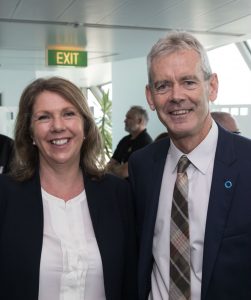
“Diabetes is the single biggest challenge confronting Australia’s health system and we cannot afford to be complacent,” A/Professor Johnson said.
“Living with diabetes can be a real struggle for people. Diabetes management can be complex and unrelenting. We know that achieving optimal blood glucose levels is important to help prevent the many serious complications.
“If we are going to reduce the burden of diabetes on people’s lives, and on the community, then we need to ensure that people can easily access necessary diabetes health checks like HbA1c, when they need them.
“Health checks like the HbA1c help give health professionals a clear idea of how people are going with their diabetes self-management and what changes may be required to reduce their risk of developing complications.
“People with type 1 diabetes should have a HbA1c check every three months, while people with type 2 diabetes should have a HbA1c check every six to twelve months.”

